The Intel Lakefield Deep Dive: Everything To Know About the First x86 Hybrid CPU
by Dr. Ian Cutress on July 2, 2020 9:00 AM ESTLakefield: Top Die to Bottom Die
At the top is the compute die, featuring the compute cores, the graphics, and the display engines for the monitors.
It might be easier to imagine it as the image above. The whole design fits into physical dimensions of 12 mm by 12 mm, or 0.47 inch by 0.47 inch, which means the internal silicon dies are actually smaller than this. Intel has previously published that the base peripheral interposer silicon is 92 mm2, and the top compute die is 82 mm2.
Compute Die
Where most of the magic happens is on the top compute die. This is the piece of silicon built on Intel’s most advanced 10+ nm process node and contains the big core, the small cores, the graphics, the display engines, the image processing unit, and all the point-to-point connectivity. The best image of this die looks something like this:
The big block on the left is the Gen 11 graphics, and is about 37% of the top compute die. This is the same graphics core configuration as what we’ve seen on Intel’s Ice Lake mobile CPUs, which is also built on the same 10+ process.
At the top is the single Sunny Cove core, also present in Ice Lake. Intel has stated that it has physically removed the AVX-512 part of the silicon, however we can still see it in the die shot. This is despite the fact that it can’t be used in this design due to one of the main limitations of a hybrid CPU. We’ll cover that more in a later topic.
At the bottom in the middle are the four Tremont Atom cores, which are set to do most of the heavy lifting (that isn’t latency sensitive) in this processor. It is worth noting the relative sizes of the single Sunny Cove core compared to the four Tremont Atom cores, whereby it seems we could fit around three Tremont cores in the same size as a Sunny Cove.
On this top compute die, the full contents are as follows:
- 1 x Sunny Cove core, with 512 KiB L2 cache
- 4 x Tremont Atom cores, with a combined 1536 KiB of L2 cache between them
- 4 MB of last level cache
- The uncore and ring interconnect
- 64 EUs of Gen11 Graphics
- Gen11 Display engines, 2 x DP 1.4, 2x DPHY 1.2,
- Gen11 Media Core, supporting 4K60 / 8K30
- Intel’s Image Processing Unit (IPU) v5.5, up to 6x 16MP cameras
- JTAG, Debug, SVID, P-Unit etc
- LPDDR4X-4267 Memory Controller
Compared to Ice Lake mobile silicon, which measures in at 122.52 mm2, this top compute die is officially given as 82.x mm2. It’s worth noting that the Ice Lake die also contains what Lakefield has on the base die as well. This top die has been quoted as having 4.05 billion transistors and 13 metal layers. For those playing a transistor density game at home, this top die averages 49.4 million transistors per square millimeter.
Base Die / Interposer Die
The base interposer die is, by contrast, a lot simpler. It is built on Intel’s 22FFL process, which despite the name is actually an optimized power version of Intel’s 14nm process with some relaxed rules to allow for ultra-efficient IO development. The benefit of 22FFL being a ‘relaxed’ variant of Intel’s own 14nm process also means it is simpler to make, and really chip by comparison to the 10+ design of the compute die. Intel could make these 22FFL silicon parts all year and not break a sweat. The only complex bit comes in the die-to-die connectivity.
The small white dots on the diagram are meant to be the positions of the die-to-die bonding patches. Intel has quoted this base silicon die as having 10 metal layers, and measuring 92.x mm2 for only only 0.65 billion transistors. Again, for those playing at home, this equates to an average density of 7.07 million transistors per square millimeter.
On this bottom die, along with all the management for the die-to-die interconnects, we get the following connectivity which is all standards based:
- Audio Codec
- USB 2.0, USB 3.2 Gen x
- UFS 3.x
- PCIe Gen 3.0
- Sensor Hub for always-on support
- I3C, SDIO, CSE, SPI/I2C
One element key to the base interposer and IO silicon is that it also has to carry power up to the compute die. With the compute die being on top to aid in the cooling configuration, it still has to get power from somewhere. Because the compute die is the more power hungry part of the design, it needs dedicated power connectivity through the package. Whereas all the data signals can move around from the compute die to the peripheral die, the power needs to go straight through. As a result, there are a number of power oriented ‘through silicon vias’ (TSVs) that have to be built into the design of the peripheral part of the processor.
Power and High Speed IO
Here’s a more complex image from a presentation earlier this year. It shows that Intel is using two types of connection from the bottom die to the top die: signal (data) connections and power connections. Intel didn’t tell us exactly how many connections are made between the two die, stating it was proprietary information, but I’m sure we will find out in due course when someone decides to put the chip in some acid and find out properly.
However, some napkin math shows 28 power TSV points, which could be in any of the configurations to the right – those combinations have a geometric mean of 3.24 pads per point listed, so with 28 points on the diagram, we’re looking at ~90 power TSVs to carry the power through the package.
Normally passing power through a horizontal or vertical plane has the potential to cause disturbance to any signalling nearby – Intel did mention that their TSV power implementations are actually very forgiving in this instance, and the engineers ‘easily’ built sufficient space for each TSV used. The 22FLL process helped with this, but also the very low density of the process needed gave plenty of room.
From this slide we can see that the simulations on TSVs in the base die required different types of TSV to be interleaved in order to minimize different electrical effects. High current TSVs are very clearly given the widest berth in the design.
When it comes to the IO of the bottom die, users might see that PCIe 3.0 designation and baulk – here would be a prime opportunity for Intel to announce a PCIe 4.0 product, especially with a separate focused IO silicon chiplet design. However, Lakefield isn’t a processor that is going to be paired with a discrete GPU, and these PCIe lanes are meant for additional peripherals, such as a smartphone modem.
Not to be discouraged, Intel has presented that it has looked into high-speed IO through its die-to-die interconnect.
In this case, Intel battles capacitance as the higher frequency requirements of newer PCIe specifications. In this instance the signal insertion loss difference between PCIe 4.0 and PCIe 5.0 is fairly low, and well within a 0.5 dB variance. This means that this sort of connectivity might see its way into future products.
Memory
Also built into the package is the onboard memory – in this case it is DRAM, not any form of additional cache. The PoP memory on top (PoP stands for Package on Package) comes from a third party, and Intel assembles this at manufacturing before the product is sold to its partners. Intel will offer Lakefield with 8 GB and 4 GB variants, both built on some fast LPDDR4X-4266 memory.
In our conversations with Intel, the company steadfastly refuses to disclose who is producing the memory, and will only confirm it is not Intel. It would appear that the memory for Lakefield is likely a custom part specifically for Intel. We will have to wait until some of our peers take the strong acids to a Lakefield CPU in order to find out exactly who is working with Intel (or Intel could just tell us).
The total height, including DRAM, should be 1 mm.
As mentioned earlier in the article, Intel moving to chiplets one on top of the other exchanges the tradeoff of package size for one of cooling, especially when putting two computationally active parts of silicon together and then a big hunk of DRAM on top. Next we’ll consider some of the thermal aspects to Lakefield.


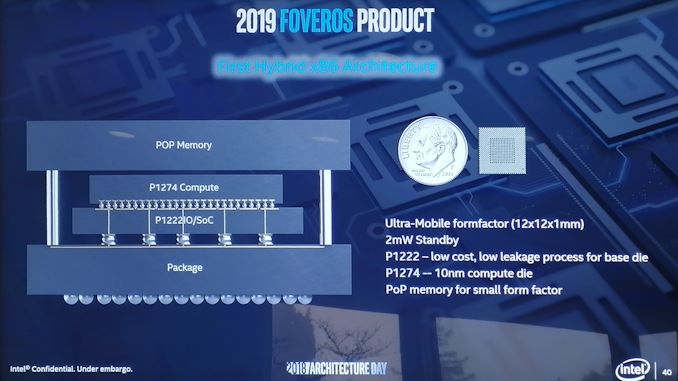

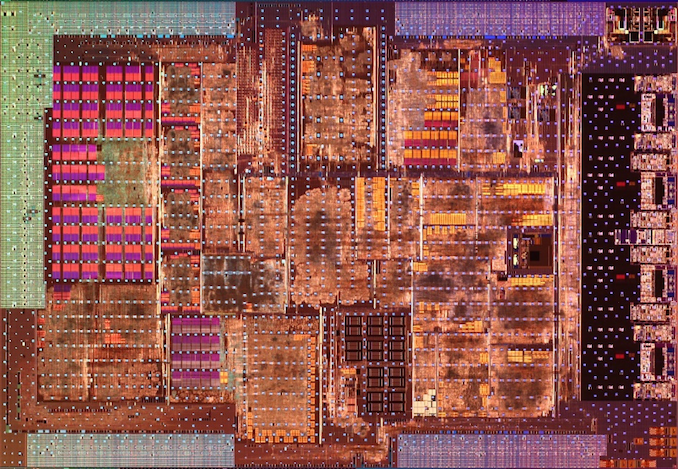
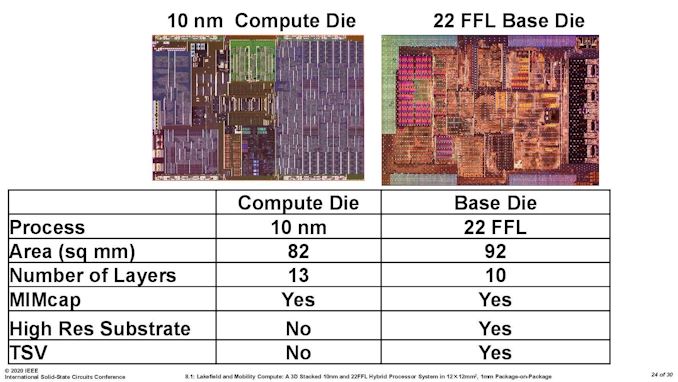
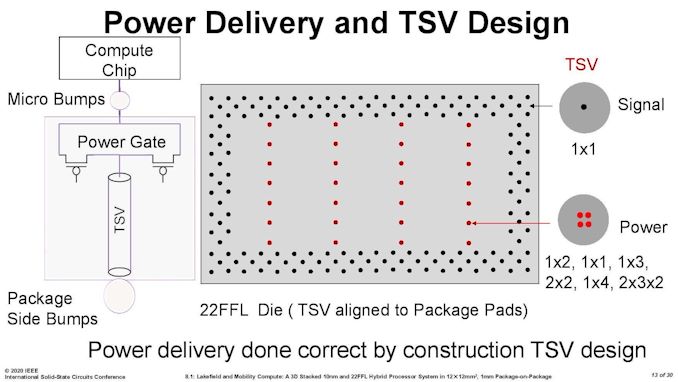
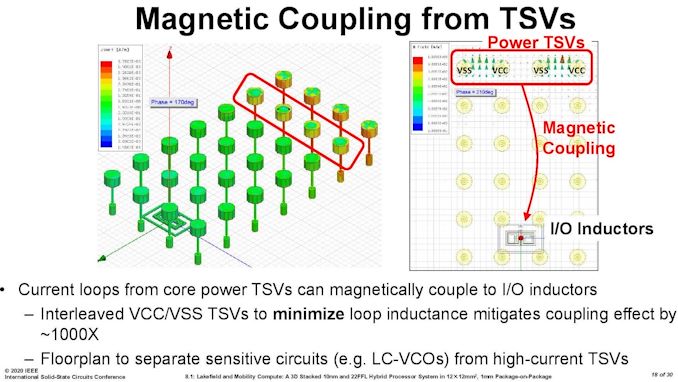
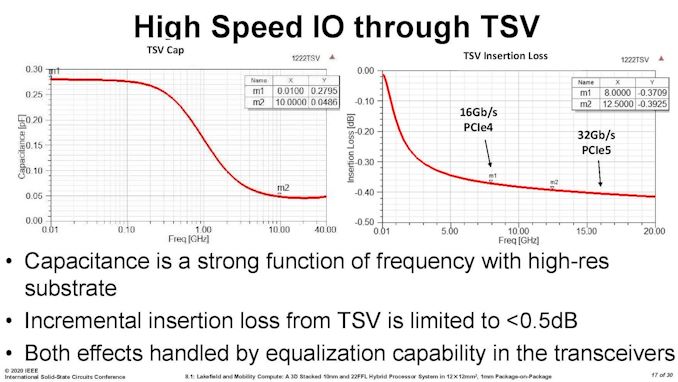
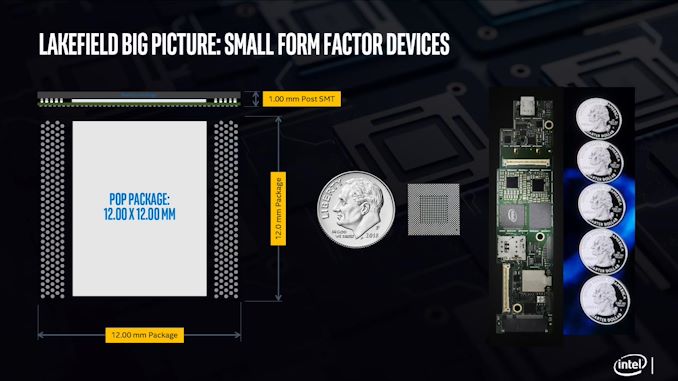








221 Comments
View All Comments
ichaya - Sunday, July 19, 2020 - link
SPEC is useful for some IPC comparisons, but it's questionable to use it for much else. PG bench in the phoronix link has a 50%+ speedup with SMT which is basically inline for perf/W/$ with Graviton 2 instance. The worst case is Casandra, but everything else is within ~5% for similar perf/$ if not comparable perf/W too since comparing TDP is workload dependent as well and not measured by most tests.XZ and Blender are ~45% faster with SMT in your openbenchmark link, but that's a 3900X (12-core/24-thread), so any comparisons to server chips (64-core Graviton 2) are unfair given power consumption and core differences. 4 times the L3 is also wrong, it's 50% more L2+L3 with half the cores and SMT if you're being fair between m6g.16xlarge or c6g.16xlarge and c5a.16xlarge.
Quantumz0d - Friday, July 3, 2020 - link
Intel has lost it's edge. And this whole portable nonsense is reaching peaks of stupidity. Those Lakefield processor equipped machines will be close to $1000 for their thin and ultra light 1 USB C / 1 3.5mm audio jack, what a fucking disaster.I had owned one ultrabook which is Acer Aspire S3 and I used to even play DotA2 on that, and after 1-2 years the whole machine heated like crazy, I repasted, no dice, cleaned fans, nothing. And then battery also stopped holding a charge. Now what ? That stupid POS is dead, not even worth, meanwhile a Haswell machine with rPGA socket, and an MXM slot from 2013 and guess what ? the GPU got an upgrade to Pascal 1070 MXM from Kepler 860M.
All these BGA trash machines will no longer hold charge nor have their serviceability, older ultrabooks atleast had a 2.5" drive, newer ones have NVMe SSDs, these 2 in 1 trash like most of the Surface lineup is almost impossible to even repair or service. And because of this thin and light market Windows 10 has been ruined as well to cater to this bs phenomenon and desktop class OS is hit with that ugly Mobile UX which lacks powerful software options, navigation and all. Plus you don't even get to repair it yourself due to non available servicing parts.
With Apple HW same thing, full BGA not even NVMe SSDs, and now they also started to make their Mac OS look and feel like iOS trash. This whole mobile and ultra portable garbage is ruining everything, from gaming to the HW.
PandaBear - Monday, July 6, 2020 - link
They don't want to cannibalize their highly profitable x86 business, so they have to give you crap for what you want if you want to pay less. The problem right now is other companies don't have to deal with this political monopoly BS and they are eating Intel for lunch.Most monopolies die this way: when their monopoly business is obsoleted and they hang on to it to milk the cow till it dies.
yeeeeman - Friday, July 3, 2020 - link
Tigerlake should also be in the pipeline soon, right?Deicidium369 - Saturday, July 4, 2020 - link
Benchmarks showing it destroying AMD Renoir at single core, and within 17% on MT - despite half the cores...https://wccftech.com/intel-10nm-core-i7-1165g7-cpu...
watzupken - Sunday, July 5, 2020 - link
"Benchmarks showing it destroying AMD Renoir at single core, and within 17% on MT - despite half the cores...https://wccftech.com/intel-10nm-core-i7-1165g7-cpu...
Till we see the actual performance, you need to take these leaks with a lot of salt. The test bed are not revealed in leaks and it is not possible to ascertain if it is a realistic number. This we don't have to speculate for long since it should be out pretty soon.
pugster - Friday, July 3, 2020 - link
Lakefield's 2.5w standby sounds kind of high. ARM cpu is probably much lower than that.Ian Cutress - Monday, July 20, 2020 - link
2.5 mWProDigit - Friday, July 3, 2020 - link
Qualcomm has proven that a single fast core isn't enough. Intel needs to at least do 2 fast cores. Then add at least 6 atom cores.But if Intel wants to compete with AMD, it'll need to create a quad core big setup, with at least 10 to 12 atom cores.
Any less will be too little. These are too little as is, competing against the 3000 series of AMD.
It would be awesome, if Intel could make a 25W quad core cpu, paired with an additional 40 watts on atom cores. That's about 20 additional cores, or a 24 core cpu.
abufrejoval - Friday, July 3, 2020 - link
A great article overall, very informative, deeply technical while still readable to a layman, very little judgement or marketing, allowing readers to form their own opinion: Anandtech at its very best!Not mentioned in the article and not covered by the comments so far is that the main driver behind Intel’s low power SoCs has been Apple: This is what Intel thought Apple would want and be happy with!
And if you contrast it to what Apple will now do on their own, that makes me want to sell all my Intel shares: Good thing I never had any.
This is another Intel 80432 or i860, tons of great ideas engineered into parts, but great parts don’t automatically make a convincing whole.
And I simply don’t see them iterate that into many more designs over the next years at competitive prices: With that hot-spot governed layout between the two all the flexibility and cost savings a chiplet design is supposed to deliver goes away and you now have two chips in a very tight symbiosis with no scale-up design benefits.
It’s a Foveros tech demo, but a super expensive one with very little chance of currying favors even at ‘negative revenues’ in the current market.
X86 is not competitive in terms of Watts or transistors required for a given amount of compute. It didn’t matter that much in PCs, the competing servers were much worse for a long time, but in the mobile space, phones to ultrabooks, it seems impossible to match ARM, even if you could rewind the clock by ten years and started to take BIG-little seriously. Lakefield is essentially a case study for Core being too big and thus power hungry and Atom failing on performance.
ISA legacy is still holding x86 from dying completely, but that matters less and less at both the top of the performance range with servers and at the bottom in mobile, where the Linux kernel rules supreme and many userlands and ISAs compile just fine.
Gaming is a hold-out, but perhaps the last generation consoles on x86, gamer PCs alone too much of a niche to determine the future.
The desktop will switch to who offers the bigger, longer lasting bang for the buck and there is a very good chance that will be ARM next.
Microsoft may be allowed to blunder along with lackluster ARM64 support for a couple more days, but Apple’s switch puts them under long deserved pressure. A nice Linux/Android/Chromium hybrid ultrabook running whatever Office could get things moving quicker… at least I hope that, because I’d never want to be forced into the bitten Apple…. by these corporate decision makers I see already twitching.
No chance I’d ever let a new Apple into my home: The ][ was the last good one they made.